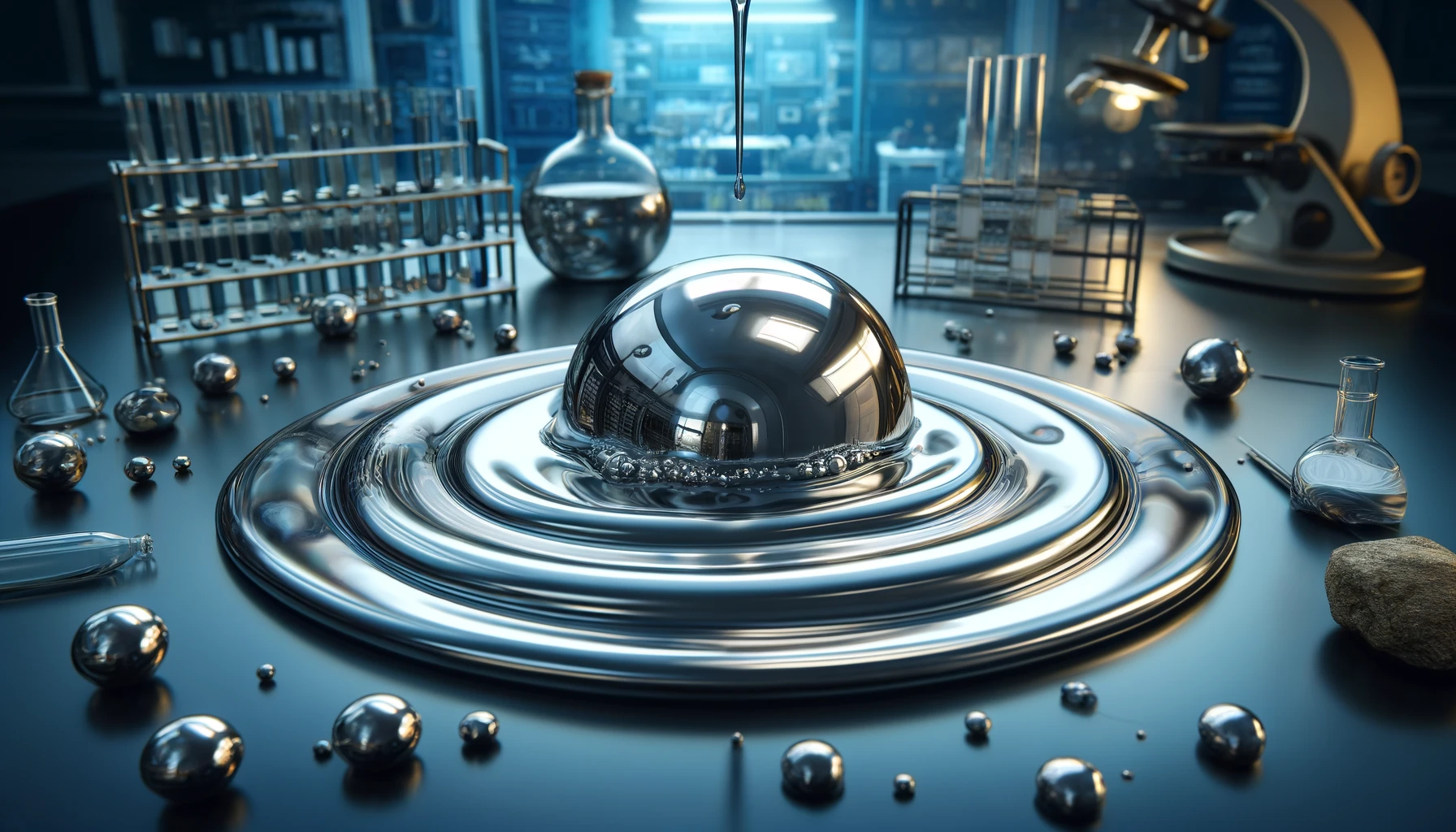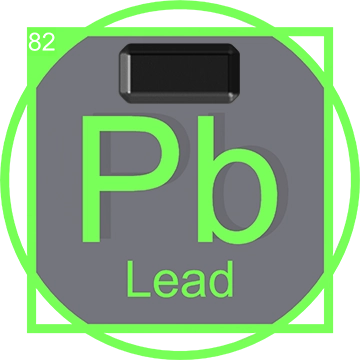Mercury (Hg): A Comprehensive Exploration
Introduction
Mercury, symbol Hg and also known as quicksilver, is a chemical element with the atomic number 80, famous for being a liquid at room temperature. This metal has intrigued scientists, alchemists, and industries for centuries due to its unique physical and chemical properties. Unlike most metals, mercury is a liquid at standard temperature and pressure, offering a shiny, mirror-like appearance that has no equal among the elements of the periodic table.
The history of mercury is as rich and fluid as the metal itself. From its ancient discovery to its multifaceted role in modern technology and environmental issues, mercury continues to be a subject of research and debate. This article aims to provide a detailed account of mercury, exploring its discovery, characteristics, applications, and the challenges it poses to health and the environment.
Discovery and Historical Significance of Mercury

The discovery of mercury dates back to ancient times, where it was first recognized for its metallurgical properties. References to mercury can be found in various ancient texts, indicating its use in a range of applications from medicine to alchemy. The earliest known mines are in Almadén, Spain, where the use of mercury was documented over 2,500 years ago. Over the centuries, mercury became a staple in the quest for turning base metals into gold, a pursuit that captivated many legendary alchemists.
Throughout history, mercury has been used in many cultures for different purposes, including in Egyptian tombs to supposedly ward off evil spirits, and by Chinese emperors who believed it to be a potion for immortality. This historical context not only highlights the widespread appeal and utility of mercury but also sets the stage for understanding its place in modern science and industry.
Physical and Chemical Properties of Mercury and it's pure form

Mercury is distinguished by its gleaming surface and liquid form. As a transition metal, it is heavy and dense, with a melting point of -38.83 degrees Celsius and a boiling point of 356.73 degrees Celsius, properties that make it unique among metals. The element does not conduct heat as well as other metals but is a decent conductor of electricity.
Chemically, mercury can form amalgams with many metals except iron, making it useful in the extraction of gold and silver from their ores. Its compounds, such as mercury chloride (HgCl2) and mercury oxide (HgO), are highly toxic but have been utilized in various applications ranging from medicine to agriculture, although many uses have been discontinued due to safety concerns.
Applications in Science and Technology
Historically, mercury was a component of many devices that required a stable, dense liquid that could conduct electricity. It was used in barometers, manometers, float valves, and even some types of switches to create a reliable, non-oxidizing contact in a secure enclosure.

In the realm of scientific research, mercury compounds are still used in certain laboratory analyses and experiments, particularly in high-temperature thermometers where alternatives would not be practical due to the high boiling point of mercury.
In the technology sector, mercury's role has evolved. It is used in the manufacturing of chlorine and caustic soda through the chlor-alkali process, a significant industrial chemical process. Additionally, mercury vapor is utilized in street lamps and fluorescent bulbs, providing efficient lighting solutions that have illuminated our cities and homes for decades.
Environmental Impact and Safety Concerns
The environmental impact of mercury is severe and well-documented. As a potent neurotoxin, mercury accumulates in water bodies, leading to bioaccumulation in the food chain. This bioaccumulation is most famously seen in fish populations, which can lead to significant health risks in humans and wildlife that consume these fish.
Safety concerns surrounding mercury have led to strict regulations on its use and disposal. In the environment, mercury primarily exists in three forms: elemental mercury, inorganic mercury compounds, and organic mercury compounds, each with different levels of toxicity and implications for environmental health.
Mercury in Medicine

Mercury has a long history in medical treatments, dating back to ancient Greece where it was used for a variety of ailments. Until the 20th century, mercury-based compounds were used in treatments for syphilis and other bacterial infections. In modern times, the use of mercury in medicine has drastically decreased due to the recognition of its toxicity and the development of safer alternatives.
Recent Advances and Future Prospects
Recent technological advances have focused on reducing mercury emissions from industrial sources and finding safer uses for mercury and its compounds. Innovations in material science have led to the development of mercury-absorbing materials that can help clean up mercury pollution. Research is also ongoing in the field of alternative energy, where mercury could potentially play a role in certain types of fuel cells.
Looking to the future, the challenges and opportunities for mercury use are both environmental and technological. Scientists are continually searching for ways to mitigate the negative impacts of mercury while exploring its unique properties for beneficial uses.
Production and Mining of Mercury
Mercury is primarily obtained from the mineral cinnabar, which is mercury(II) sulfide (HgS). The extraction process involves heating cinnabar in a current of air which converts the mercury sulfide into mercury vapor and sulfur dioxide. This vapor is then cooled and condensed into liquid mercury. Mining operations for mercury are less common today due to decreased demand and increased recognition of its environmental and health hazards.
Significant mercury mines historically included sites in Almadén (Spain), Idrija (Slovenia), and Monte Amiata (Italy). Other regions such as China, Kyrgyzstan, and Russia have also been notable producers. Mercury is often found in regions where other sulfide minerals are present, as it generally occurs with elements like zinc and lead.
Modern Applications of Mercury
In contemporary times, the use of mercury has significantly declined due to its toxic nature and the development of safer alternatives. However, it is still used in certain applications where alternatives are not viable. These include fluorescent lighting, where mercury vapor helps produce visible light, and in dental amalgams for its ability to form a durable filling material.
Additionally, mercury is used in industrial processes such as the production of chlorine and caustic soda through the chlor-alkali process. It also finds application in high-precision scientific instruments where its high density and liquid state at room temperature are beneficial.
The Future of Mercury in Science and Technology

The future of mercury usage is focused on reducing environmental and health risks associated with its use. Innovations are continually being developed to minimize or eliminate the use of mercury in various applications, such as advancing LED technology to replace mercury-containing fluorescent lamps.
Research is also ongoing in the field of materials science to develop mercury-absorbing materials that can mitigate mercury pollution. Moreover, the potential use of mercury in organic photovoltaics and other renewable energy technologies is being explored, which could revolutionize the way mercury is utilized in the energy sector.
Conclusion
While mercury remains a valuable element in certain niche applications, the global trend towards reducing its use and finding safer alternatives is likely to continue. The dual challenge of harnessing the unique properties of mercury while mitigating its substantial risks represents a significant focus for future scientific and industrial endeavors.












